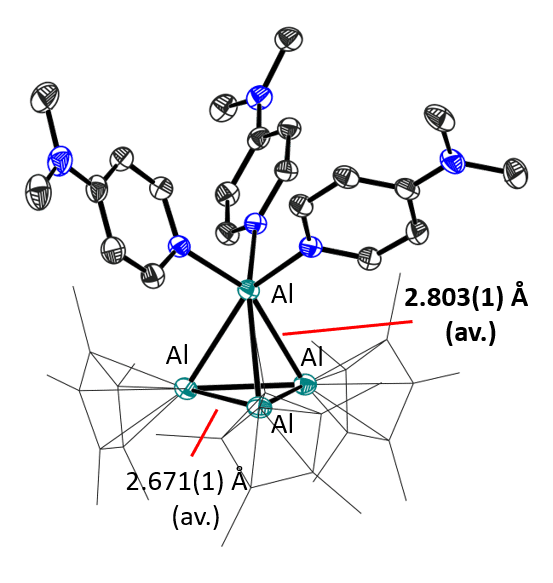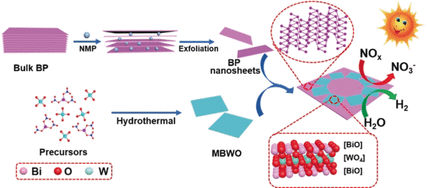Important milestone on the way to transition metal catalysis with aluminum
Chemists successfully synthesize a cationic, low-valent aluminum complex salt via metathesis
The chemists Philipp Dabringhaus, Julie Willrett and Prof. Dr. Ingo Krossing from the Institute of Inorganic and Analytical Chemistry at the University of Freiburg have succeeded in synthesizing the low-valent cationic aluminum complex [Al(AlCp*)3]+ by a Metathesis reaction. The team presents their research work in the journal Nature Chemistry.

Addition of ligands, such as dimethylaminopyridine in this case, breaks the dimeric structure of the cation and the lone aluminum atom shows its strong acceptor character.
Image: provided by the research group
"In chemistry, cationic low-valent aluminum compounds are highly sought after due to their potential transition metal-like ambiphilic reactivity. However, numerous previous attempts to synthesize cationic low-valent aluminum compounds by oxidative or reductive methods have been largely unsuccessful," Krossing explains. So far, he said, there has been only one example of a cationic, low-valent aluminum compound, but it cannot be prepared by rational synthesis. "We now show that there is an unexpectedly easy access to low-valent aluminum complexes with metathesis after all," Krossing says. In metathesis, partial structures are simply exchanged between the reaction partners.
Aluminum as a cheaper alternative for catalysis
The Freiburg chemists prepared the salt [Al(AlCp*)3]+[Al(OC{CF3)3}4]– from the Schnöckel tetramer (AlCp*)4, in which aluminum is already present in the +1 oxidation state. The (AlCp*)4 reacted with Li[Al{OC(CF3)3}4] and the reaction mixture immediately turned from yellow to red. When the reaction mixture was crystallized, the scientists obtained the [Al(AlCp*)3]+[Al(OC{CF3)3}4]–-salt as dark purple crystals. "X-ray crystallographic, UV spectrometric and computational studies indicate the presence of the dimeric structure both in the solid state and in solution at high concentration and low temperature, but at low concentration and room temperature the monomer forms. This clearly indicates ambiphilic reactivity of the cation," Dabringhaus said.
"Consequently, this salt can potentially be used as a building block for an [:Al(L)3]+-salt that, due to its cationic nature, might be able to perform reversible oxidative additions and reductive eliminations of small molecules," Krossing explains. "This brings us one step closer to our long-term goal of achieving catalysis - currently done with expensive and rare transition metals - with aluminum. Aluminum is the second most abundant element in the Earth's crust and capable of doing so in principle, as our work shows. But unfortunately, it will probably be at least another 20 years before our research on this is applied."
Original publication
Other news from the department science
Most read news
More news from our other portals
See the theme worlds for related content
Topic world Synthesis
Chemical synthesis is at the heart of modern chemistry and enables the targeted production of molecules with specific properties. By combining starting materials in defined reaction conditions, chemists can create a wide range of compounds, from simple molecules to complex active ingredients.

Topic world Synthesis
Chemical synthesis is at the heart of modern chemistry and enables the targeted production of molecules with specific properties. By combining starting materials in defined reaction conditions, chemists can create a wide range of compounds, from simple molecules to complex active ingredients.





























































